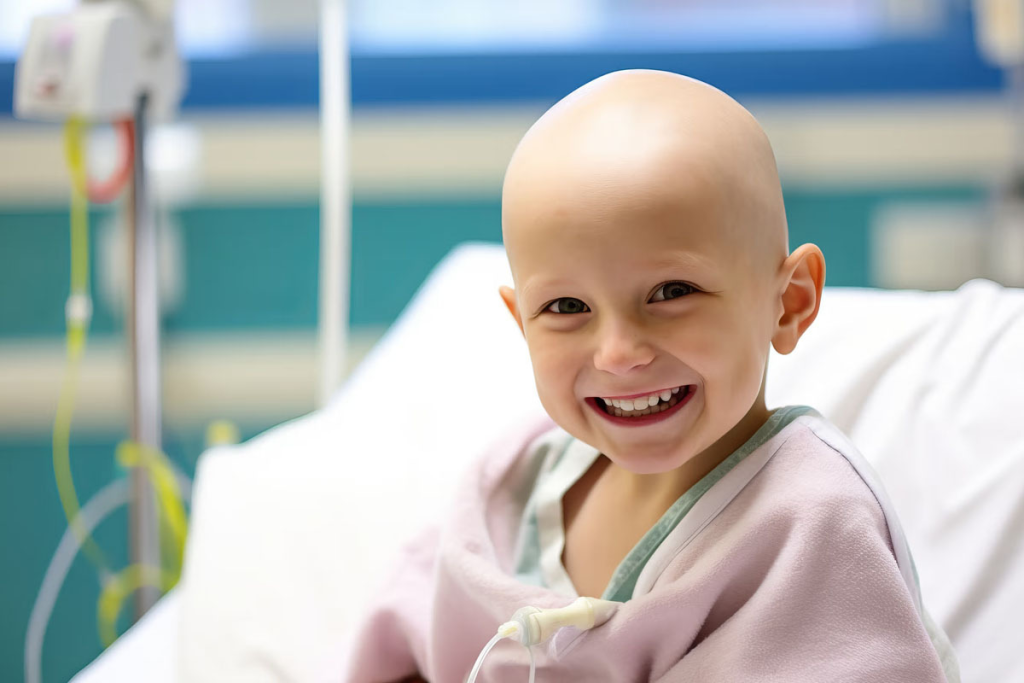Last Updated on October 20, 2025 by Batuhan Temel
Pediatric cancers are rare, with only about 1% of all new cancer cases each year in the U.S. and worldwide. They come in many types of childhood cancer. Are pediatric cancers considered rare childhood diseases? Understand the crucial prevalence statistics and why awareness of these illnesses is important.

Childhood cancer rates have slowly gone up since 1975. This makes the different pediatric types a big worry. The U.S. Rare Diseases Act of 2002 says a disease is rare if it affects fewer than 200,000 people. So, all types of childhood cancer are rare diseases.
It’s very important to tackle these cancers. They have a big impact on families and healthcare systems all over the world.
Understanding pediatric cancers is key to tackling their unique challenges. These cancers, also known as childhood malignancies, affect kids and teens. They are rare, making up about 1% of all cancer cases.
The U.S. Rare Diseases Act of 2002 defines rare diseases as those affecting fewer than 200,000 people. By this standard, all pediatric cancers are rare. Their rarity and diversity make diagnosis and treatment tough.

Classifying childhood cancers is complex. The International Classification of Childhood Cancer (ICCC) is a key system. It groups cancers into main types like leukemias, lymphomas, and brain tumours.
These classifications help us understand different types of pediatric cancer. They guide us on the best treatments. Groups like the Children’s Oncology Group (COG) help develop these classifications.
Pediatric cancers make up about 1% of all new cancer cases. This shows how rare they are compared to adult cancers. It highlights the need for specialized care and research.
Groups like the European Cooperative Study Group for Rare Pediatric Cancers (EXPeRT) work to tackle these challenges. They aim to improve our understanding and treatment of rare childhood cancers through international collaboration.
Every year, hundreds of thousands of children worldwide are diagnosed with cancer. The global burden of pediatric cancer is significant, with an estimated 400,000 new cases worldwide each year. In the United States alone, about 15,000 cases are diagnosed annually in individuals younger than 20 years.

Pediatric cancer can occur at any age, from infancy through young adulthood. The risk factors and age distribution vary among different types of pediatric cancers. Certain genetic conditions and environmental exposures have been identified as risk factors for some types of pediatric cancer.
For instance, some cancers are more common in younger children, while others peak during adolescence. Understanding these patterns is ketoor early detection and intervention.
Brain and central nervous system (CNS) tumors are among the most common types of pediatric cancer. These tumors can be challenging due to their location and the delicate structures involved.
Treatment protocols for brain and CNS tumors often require a multidisciplinary approach, including surgery, radiation therapy, and chemotherapy. Advances in neurosurgery and radiation oncology have improved outcomes for many patients.
Some pediatric cancers are considered ultra-rare, with very low incidence rates. These malignancies often require specialized care and treatment protocols tailored to their unique characteristics.
Research into ultra-rare pediatric malignancies is ongoing, with efforts to improve diagnosis, treatment, and outcomes for these children. Collaborative studies and international cooperation are key in advancing our understanding and management of these rare diseases.
Diagnosing rare pediatric cancers can be challenging due to their low incidence and often nonspecific symptoms. Delayed diagnosis can impact treatment outcomes, making it essential to improve diagnostic pathways.
Advances in genetic testing, imaging technologies, and biomarker research are helping to overcome these challenges. Early and accurate diagnosis is critical for initiating appropriate treatment and improving survival rates.
We’ve seen big steps forward in treating and managing pediatric cancers. This has led to better survival rates worldwide. In developed countries, the five-year survival rate is now around 80“85%. This shows how far medical research and treatment methods have come.
Creating standard treatment plans has been key in helping kids with cancer. These plans are based on solid research and clinical trials. This ensures treatments are both effective and safe.
For example, targeted therapies have changed the game for some rare childhood cancers. They offer new hope to patients and their families.
Between 1975 and 2020, deaths from childhood cancer dropped by more than 50%. This big drop is thanks to the hard work of researchers, doctors, and advocacy groups. They’ve worked together to find and use effective treatments.
As more kids survive cancer, we need better care for them. Survivors often face health problems that last a long time. So, it’s important to focus on their long-term health.
We’re now working on survivorship care plans. These plans help ensure survivors get the support and monitoring they need. This includes regular check-ups and screenings for late effects.
Even with progress, there are big hurdles in pediatric cancer research. One big issue is that research gets less funding than adult cancer research. Rare pediatric disorders and childhood rare diseases need more money to find effective treatments.
Also, because some cancers are rare, it’s hard to do big clinical trials. These trials are key to finding new treatments. We need creative solutions to get past these challenges and move forward in pediatric oncology.
Advocacy and research are key to moving forward in pediatric oncology. Groups like the Children’s Cancer Research Fund lead the way. They support research and push for more funding for rare childhood cancers.
By backing research and advocacy, we can keep improving treatment results and survival rates for kids with cancer. Together, we can make more progress in pediatric oncology.
As we wrap up our look at pediatric cancers, it’s clear they need a lot of focus and study. The National Institutes of Health (NIH) and other big funders often go for research that helps more people. This makes it hard to get money for rare pediatric diseases.
Top healthcare groups, like those aiming for the best care, have a big goal. They want to make treatments and care plans better for kids with cancer. By backing research and giving full care, we can tackle the tough issues of rare pediatric diseases. This will help improve life for kids with cancer.
New tech like next-generation sequencing (NGS) and molecular profiling has changed how we understand and treat pediatric cancer. This means we can tailor treatments to each child. For the latest on research and progress in pediatric oncology, check out studies in trusted sources.
The U.S. Rare Diseases Act of 2002 says a rare disease affects fewer than 200,000 people. This makes all pediatric cancers rare. The Children’s Oncology Group (COG) has specific rules for what counts as a rare pediatric cancer.
Pediatric cancers are very rare, making up only 1% of all new cancer cases. This rarity makes diagnosis and treatment hard.
Around 400,000 new cases of pediatric cancer happen worldwide each year. Some types, like brain tumours, are very tough to treat.
Pediatric cancers are rare and varied, making diagnosis and treatment tough. Finding the right diagnosis is a big problem. Ultra-rare cancers need special care.
New treatments and evidence-based care have greatly improved survival rates for kids with cancer. It’s important to keep up with care after treatment to deal with long-term health issues.
Pediatric cancer research gets less funding than adult cancer research. But efforts like those by the Children’s Cancer Research Fund are key to making progress in treating kids’ cancers.
Brain and central nervous system tumours are very hard to treat. Ultra-rare cancers also need special care.
Supporting research and providing top-notch healthcare can help improve outcomes for kids with cancer. This way, we can tackle the challenges of rare pediatric diseases.
Subscribe to our e-newsletter to stay informed about the latest innovations in the world of health and exclusive offers!
WhatsApp us